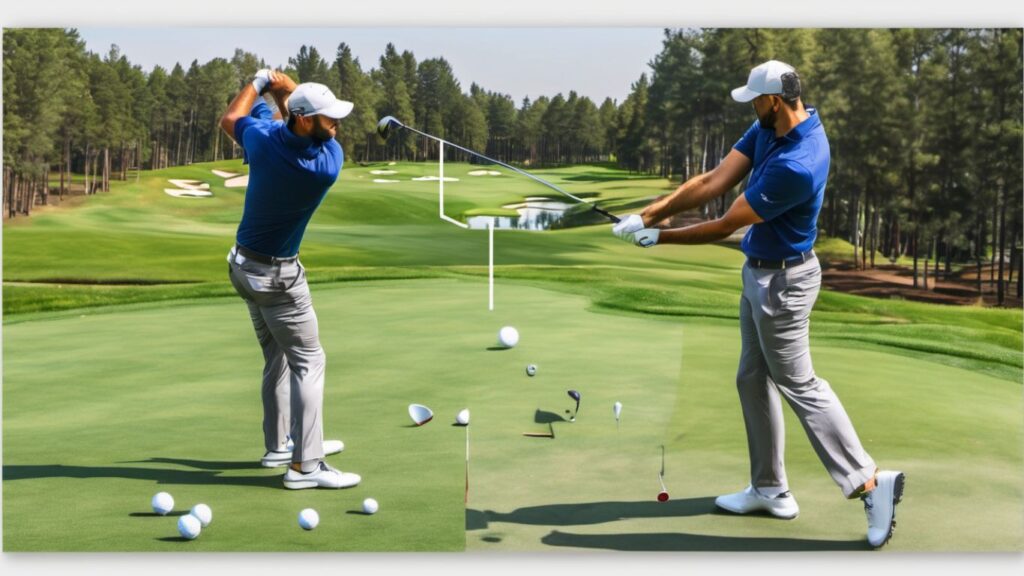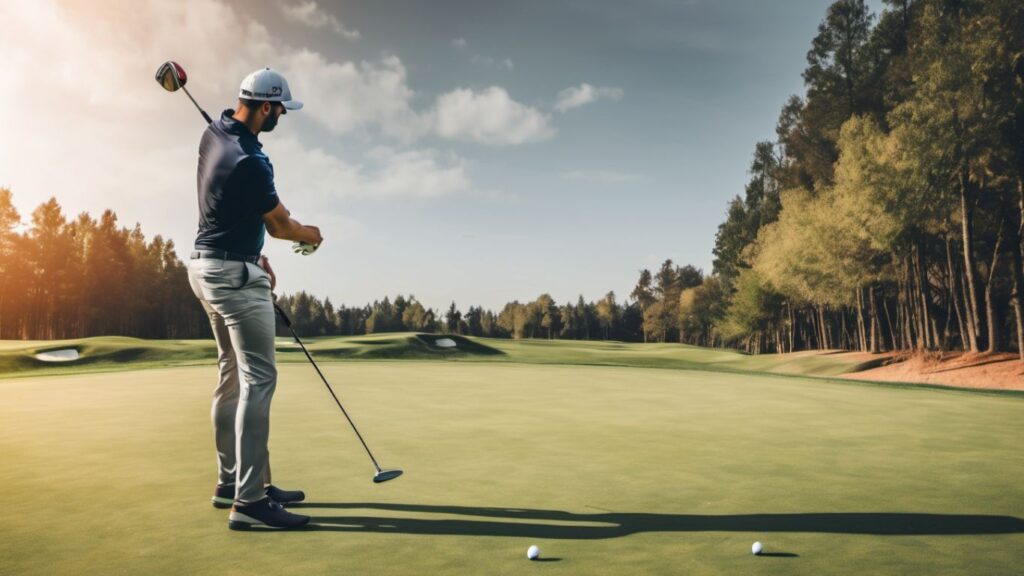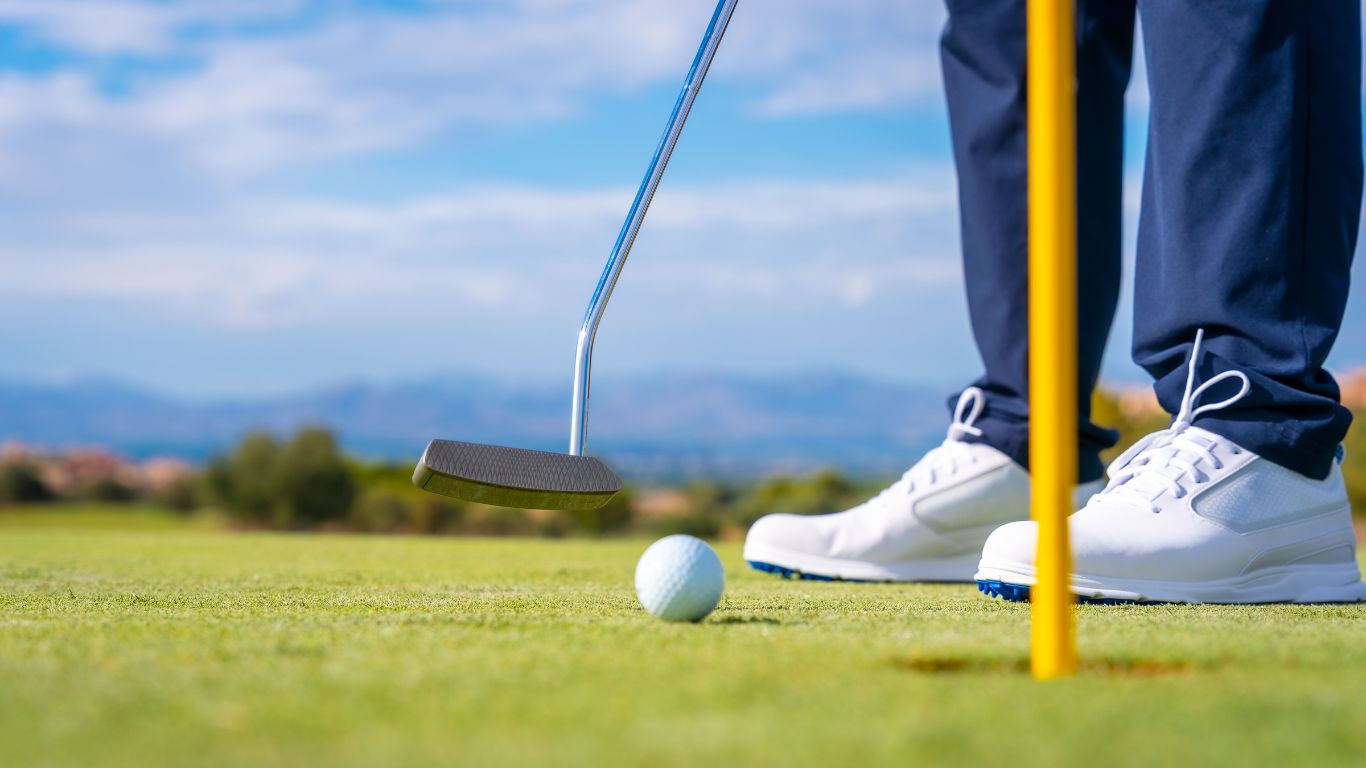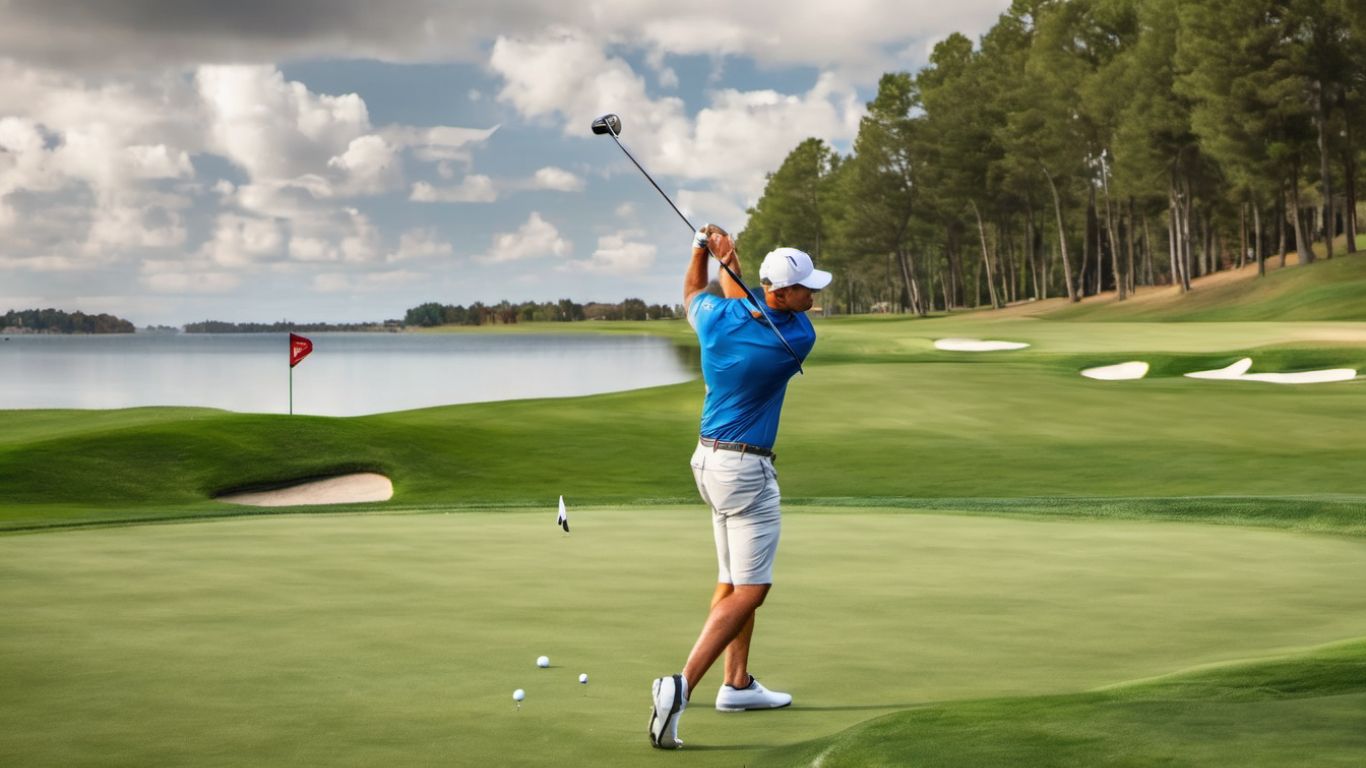Often considered the infinite game, golf offers an endless quest for improvement and the pleasurable torment of refining a swing that seems so simple yet infinitely complex. Whether you’re new to the tee or you’ve been vying for that hole-in-one, the swing is the fundamental pillar of your game. This post will not only break down the biomechanics of the swing but also provide practical tips to enhance your performance in the fairway.

Understanding Mechanics Behind the Perfect Swing
The perfect swing is the sweet marriage of power, precision, and poise. At its essence, the golf swing is a complex, coordinated movement that requires the integration of the body’s largest and smallest muscle groups. It’s a ballet of shifting weight, rotating hips, and extending arms, culminating in the clubhead’s beautiful ‘swoosh’ through the air.
Here, we’ll dissect the key phases of the swing:
The Setup
Often overlooked in its significance, the setup dictates your success before the club begins its arc. Your feet, shoulders, and hips should parallel the target line. Your weight should be balanced on the balls of your feet, and your spine should maintain a slight tilt forward.
Backswing
This is where you load the spring. Begin with a one-piece takeaway, where your arms and the club start the movement together. Rotate your shoulders to about 90 degrees while maintaining the position of your head.
Downswing
The power phase. Start by leading with your lower body, shifting your weight from the inside of your right foot to the left while keeping your head steady. The sequence of movements—hips, trunk, arms—is paramount here for an efficient energy transfer to the club.
Impact
This is where preparation meets execution. Your hands should lead the clubhead through to a square impact position, striking the ball first and then the turf. Your body should be fully rotated, with your belt buckle facing the target.
Follow-Through
The finishing touch. Follow through and allow your weight to transfer fully onto your front foot. Your club should wrap around your body, pointing at the target, with your body balanced and facing the target.

Building a Solid Foundation With the Right Equipment
Before we get into the nitty-gritty of the swing, it’s critical to ensure you have the right equipment. The right clubs can make or break your experience on the course.
Club Fitting
Proper club fitting can significantly improve your game. A fitting professional will measure you for the right length, lie angle, grip size, and shaft flex, all tailored to your height, swing speed, and playing style.
Golf Ball Selection
Believe it or not, not all golf balls are created equal. Choose a ball that matches your swing speed and spin rates. High handicappers should opt for a low-compression ball that offers more distance and forgiveness.
Considering Grips
Your grips are the only point of contact between you and the club. They should be comfortable, tacky, and in good condition. For optimal swing performance, replace your grips regularly.
Perfecting your Pivot – The Role of the Lower Body
The lower body is the foundation of your swing. Learning how to use your legs and hips correctly can add significant power and consistency to your shots.
Initiating the Downswing with Your Knees
At the start of the downswing, a slight bump of the left knee toward the target will shift your weight and help drop the club into the ‘slot’ for a more inside approach.
Weight Transfer
A solid golf swing involves a weight transition from the trail to the lead side. The hips should lead this transfer, with most of the weight ending up on the front foot at impact.
Hip Rotation
Opening the hips through the downswing and follow-through allows the energy generated by the lower body to flow up through your spine and into the arms, providing a more fluid and powerful strike.
The Importance of a Relaxed Upper Body
The most common mistake among amateur golfers is a tension-filled upper body. Tension not only robs your swing of power but also inhibits the free movement necessary for a consistent swing.
Shoulder Turn
A full shoulder turn during the backswing is critical to setting up a powerful downswing. Ensure that your shoulders are turning under your chin for maximum rotation.
Loose Arms
Initiate the downswing with your lower body, allowing your arms to drop naturally. Keeping your arms relaxed will help maintain clubhead speed and prevent ‘casting’ the club.
Wrist Hinge
During the backswing, a natural wrist hinge will create a powerful coil. Be careful not to overextend the hinge, as this can also lead to tension in the forearms.

Hand and Arm Positioning for Consistency
The hands and arms’ role in the golf swing is to guide and support the club, not to dominate it. Positioning your hands correctly on the grip can promote a square clubface and a more consistent ball flight.
The Golf Grip
There are several types of grips, but the most common are the overlapping, interlocking, and baseball grips. Find the one that feels most natural and allows you to maintain a square clubface throughout the swing.
Arm Extension
Maintaining a slight bend in your elbows during the swing can improve your control and power. Overextending can lead to losing control while keeping them too bent can reduce power.
Arm Swing Path
The arms should swing on a circular path around the body in sync with the rotation of your shoulders and hips. Avoid a ‘chicken wing’ position on your follow-through, as this can lead to a loss of power and accuracy.
Mental Preparation and Visualization
Golf is as much a mental game as it is a physical one. Visualization techniques before a shot can help you execute more confidently and precisely.
Pre-Shot Routine
Developing a pre-shot routine that includes lining up your target, taking practice swings, and visualizing the desired shot can calm your mind and prepare your body for the upcoming challenge.
Using Imagery
Before a shot, please take a moment to picture the ball’s trajectory and where you want it to land. Clear, focused imagery can help your mind and body work together to achieve that result.
Staying Present
It’s easy to get distracted on the golf course. Whether it’s the weather, your last shot, or the group in front of you, the key is to stay present and focus on the process of each shot.
Wrap-up: The Never-Ending Journey to Mastering Your Golf Swing
The golf swing is a beautiful, complex movement that combines athleticism and precision. By understanding the mechanics, honing your equipment, and developing a routine, you’ll be well on your way to a more satisfying round. Remember, no one masters the game overnight—it’s a continuous learning process that rewards dedication and perseverance.
If you’re starting, don’t be discouraged by the seemingly endless nuances. Every golfer, from amateur to professional, starts at the beginning. On the flip side, if you’re a seasoned player, use this guide to refine your skills and reach the next level of mastery. Whether you’re teeing off against friends or striving for personal bests, the perfect swing is within reach – one practice session at a time.









